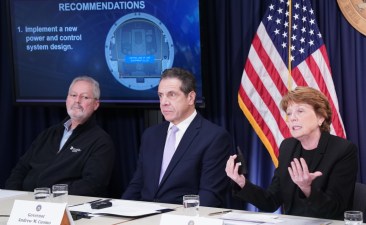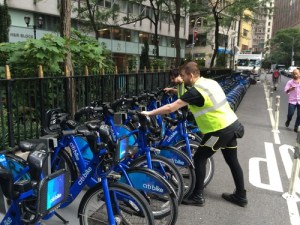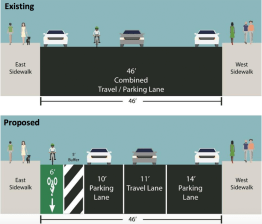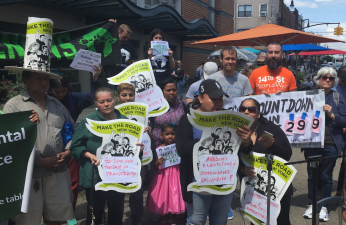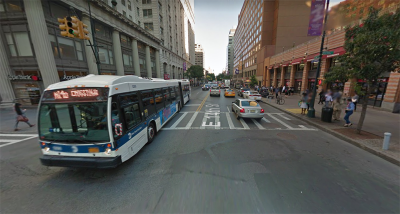Citi Bike May Expand East Into Bushwick Before the L Train Shutdown
The DOT expects thousands of L train riders to opt to take bikes when the line goes dark in April.
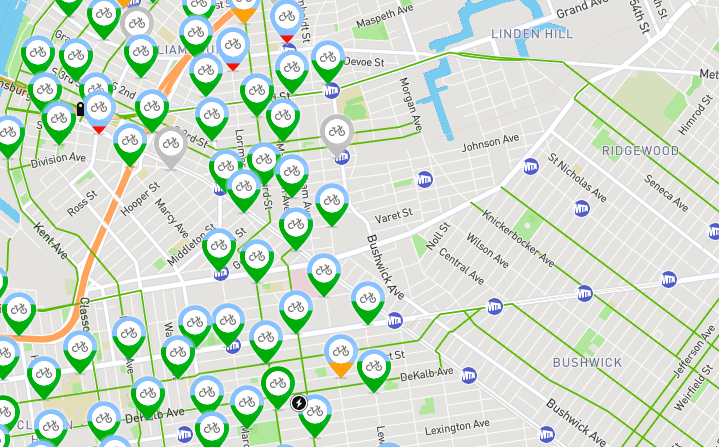
Here’s a tiny piece of good news out of next April’s L train shutdown: Citi Bike may expand into Bushwick in advance of the Canarsie tunnel repair.
That was pretty much the sole piece of news made as Mayor de Blasio brought his “City Hall in the Boroughs” tour to Brooklyn on Tuesday. Standing on the corner of Bushwick Avenue and Grand Street, the mayor mostly dispensed platitudes (“It’s going to be a war-room dynamic,” he said of his administration’s vowed responsiveness) and promised that if DOT Commissioner Polly Trottenberg “needs something, she is going to get it.”
He also invited brief speeches by no less than four — count ’em, four — members of the City Council from districts affected by the 15-month tube tie-up. And he also praised the new electric Citi Bikes as a key element of the city mitigation effort.
But when Streetsblog pointed out that the press conference itself was occurring beyond the eastern edge of the Citi Bike zone, de Blasio allowed Trottenberg to break some news.
“We are looking at where we’re going to go next, potentially deeper into Bushwick,” Trottenberg told reporters.
That wouldn’t be difficult. Currently, there are no Citi Bike docks in Bushwick or Ridgewood, but the city and MTA hope to at least double the number of bike crossings over the Williamsburg Bridge each day during the shutdown.
To cope with the expected rise in cycling, DOT is expanding the North Brooklyn bike lane network. The agency added protected bike lanes to the bridge approach last year and other improvements are on the way, including bike lane improvements on Grand Street and points east.
Citi Bike operator Motivate, meanwhile, recently announced plans to increase the size of its fleet by 10 percent, concentrating the expansion in affected areas. The company will also deploy 1,000 pedal-assisted electric bikes on both ends of the bridge.
But details such as the locations of the new docks and when they’ll be installed remain up-in-the-air, Trottenberg said.

“I can’t tell you exactly what the perimeter will be,” Trottenberg told Streetsblog. “The goal is to get them in before the shutdown.” She said to expect more information in the coming months.
The larger “L-pocalypse” plan calls for 80 buses per hour moving across the Williamsburg Bridge, which will be limited to buses and cars with three or more people. There will also be dedicated bus lanes, enforced with cameras to prevent drivers from blocking transit. Additional ferry service and a “busway” on 14th Street are also part of the plan.
But all the mitigations have to ease the burden for 225,000 people who currently cross under the East River on the L train every day, plus tens of thousands more who use it along 14th Street in Manhattan.
“We have a plan that we believe will work,” de Blasio told reporters. “We’re ready to make adjustments if there’s anything that needs work, but in terms of the level of preparation, the years of preparation that have gone into his, I feel it’s the right plan to help people keep moving.

“If we need more enforcement, we’re going to do it. If we need more personnel, we’re going to do it,” he added. “If we need to run more buses and it’s possible to — whatever it takes to make things work.”
The mayor had ridden the L train from 14th Street in Manhattan to Bushwick for the event. But given how little news the mayor made, some members of his normal traveling press corps were less than enthusiastic.
“How would you characterize the purpose of this press conference?” Politico’s Dana Rubinstein asked.
De Blasio said his presence in the borough, flanked by Brooklyn elected officials, showed that his administration was taking the coming crisis seriously.

